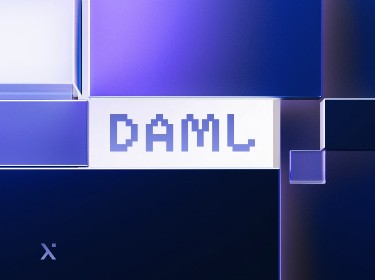Thanks to its parachains, Polkadot is viewed as a next-gen solution to the scalability trilemma that many other blockchains struggle with. Will Polkadot parachains still be as relevant when Ethereum deploys shards?
The Polkadot protocol is a hot topic in the blockchain and web3 community since it offers a solution to three major issues: scalability, cost, and security. Polkadot achieves this through uniting different blockchains into a single network of parachains.
This innovation has brought a great deal of attention to Polkadot, resulting in $7.68 billion in market cap and 550+ projects of various types built on the blockchain.
In this article we will explore the concept of substrate development services, parachains, find out their types and benefits, and compare Polkadot parachains with Ethereum shards and the Kusama network.
What is a Polkadot parachain?
Polkadot parachains are project-specific blockchains connected to the Polkadot network. Thanks to them, Polkadot transactions are executed in parallel, which significantly boosts transaction speed. You can compare them with a multilane highway, for example — the more lanes, the faster the traffic.
How do Polkadot parachains work?
Polkadot parachains are controlled by the Relay Chain which is the system’s main chain. Each parachain can construct and propose blocks to validators on the Relay Chain. If the blocks pass availability and validity checks, they are added to the finalized chain.
Parachains inherit security from the Relay Chain and are able to share any type of data or asset with one another. Parachains may, but are not required to, have their own tokenomics and native tokens.
Currently Polkadot can handle up to 100 parachains, but this number may increase as the network grows.
Polkadot founders have recently rolled out a roadmap of upgrades, including new concepts such as asynchronous backing, cross-consensus communication standard, upgrades to cross-chain message passing protocol, governance improvements, and parathreads. With these, Polkadot will further increase its efficiency and reliability.
Types of Polkadot parachains
![]()
Polkadot parachains can be of different types, including:
- Common good parachains function for the benefit of the entire Polkadot ecosystem and operate on a non-profit basis, typically using Polkadot’s native token, DOT.
- Independent token economies have their own native tokens and economic ecosystems.
- Parachain hubs provide a range of functionality to serve a broader community or use case, such as DeFi and governance hubs.
- Smart contract platforms build and host smart contract-based dApps and services, with support for Wasm-VM, EVM, and other virtual machines.
- Bridges allow Polkadot parachains and dApps to connect to external networks like Kusama, Bitcoin, and Ethereum.
Get acquainted with the top smart contract development platforms
What are the benefits of Polkadot parachains?
![]()
Polkadot parachains boast some tangible benefits, namely:
- High transaction speed — parachains allow Polkadot to process 1,000 transactions per second since they are handled in parallel. Once asynchronous backing is enabled, transaction speed may reach 100,000 or even 1,000,000 tps.
- Interoperability — parachain technology makes it possible for multiple blockchains to communicate with one another, thus making data exchange much easier and faster.
- High security — all parachains are protected by the Relay Chain’s security system, which ensures high safety standards. It is very beneficial for small networks that don’t have an effective security system.
- Flexibility — parachains do not have strict design requirements so they can be built for different purposes ranging from finance to gaming. Each parachain may have its own architecture, token, and governance, and can be either private or public.
- Better usability — parachain users are not required to hold DOT tokens to interact with apps and services, and may not even have any idea that they are using a blockchain.
Polkadot parachains use cases
Due to their outstanding customizability and advanced security measures, Polkadot parachains can be used for a huge variety of use cases, from DeFi and Web 3.0 solutions to gaming and NFTs.
Here are three promising Polkadot parachains:
Moonbeam
The Moonbeam parachain is a smart contract development platform that aims to combine the scalability and interoperability of Polkadot with Ethereum smart contract development tools.
Thus, dApps based on Moonbeam benefit from the Polkadot Relay Chain’s security, and can interact with other parachains linked to the Polkadot Relay Chain, even though they are built with Ethereum development tools. Moonbeam also allows Ethereum-based dApps to move to the Polkadot ecosystem.
Centrifuge
Centrifuge is a DeFi lending protocol that simplifies loan receiving while also providing investors with a predictable income.
Centrifuge enables users to propose real-life assets in the form of NFTs as collateral for loans. If the borrower fails to return the money, the lender will automatically receive the NFT.
The platform has its own token, CFG, which enables holders to pay transaction fees, stake assets, and participate in the governance of Centrifuge.
Discover more interesting NFT use cases across various industries, including logistics, fashion, and real estate
Efinity
Efinity is an NFT-focused Polkadot parachain. It has an in-built NFT marketplace supporting tokens from any other chain, including the popular ERC-721, ERC-1155, and ERC-20 standards, and granting users with a possibility to transfer non-fungible tokens from different blockchains to the Efinity network.
Efinity’s aim is to keep transaction fees low to allow users to experience their favorite collectibles without worrying about how the network operates.
Polkadot parachains vs Ethereum shards vs Kusama
When Polkadot parachains are on the agenda, they are inevitably compared with Ethereum shards and the Kusama network. Let’s take a look at how each of them function, and their key differences and use cases.
Polkadot parachains vs Ethereum shards
![]()
Sharding is the next step in a planned series of Ethereum upgrades and is scheduled to be executed in 2023.
Even though both Polkadot parachains and Ethereum shards have a common aim — to boost transaction speed and increase scalability without compromising decentralization — they have different approaches.
First, in contrast to Polkadot, which accumulates independent blockchains into one network, Ethereum will split itself into 64 linked databases called “shards”. Each shard will have its own independent state with a unique set of account balances and smart contracts, but all shards will have the same Ethereum Wasm interface.
Ethereum’s main chain, the Beacon Chain, will supervise all the shards. As already mentioned, Polkadot also has a main chain — the Relay Chain.
Second, Ethereum shards will all have the same state transition function (STF) which provides an interface for smart contract execution. Contracts exist on a single shard and can send asynchronous messages between shards. Contrastingly, each Polkadot parachain has a unique STF. Applications can exist either within a single parachain or by composing logic across parachains.
Third, the blockchains leverage different approaches to establishing communication. Ethereum shards will have access to each other’s state via crosslinks and state proofs. Meanwhile, Polkadot uses Cross-Consensus Message Passing Format (XCM), allowing parachains to send arbitrary messages to each other.
Sharding allows both blockchains to increase their capacity, with current Polkadot transaction speed being 1,000 tps, while Ethereum is estimated to reach 100,000 tps.
All in all, both Polkadot parachains and Ethereum shards offer invaluable benefits and are both applicable to a range of use cases, from startups to enterprises. However, Ethereum sharding is yet to be deployed, so Polkadot has a formidable lead for the time being.
Looking for a side-by-side comparison of Polkadot with Ethereum? Don’t miss our article
Polkadot vs Kusama
While there is competition between Polkadot and Ethereum, this notion doesn’t apply in relation to Polkadot and Kusama.
The Kusama blockchain is a part of the Polkadot ecosystem, and is used for trying out new features before they are released on the mainnet.
Kusama has nearly the same codebase as Polkadot and similar architecture — the Relay Chain, which is the main Kusama blockchain, and parachains.
Transaction speed is also the same with both Kusama and Polkadot — 1,000 tps. However, it takes less time for Kusama to implement upgrades thanks to its modified governance parameters: 7 days to vote on referendums and 8 days to carry the upgrades out after a vote. This allows Kusama to evolve faster than Polkadot, which requires up to a month to implement changes.
Even though Polkadot can’t boast such speed and adaptability, it puts great emphasis on stability, with slower, more methodical governance and upgrade processes. Thus, Kusama is a great option for early-stage deployment and experimentation on new concepts and ideas, while Polkadot is preferable for high-value and risk-averse applications like enterprises, B2B services, and financial applications.
How to deploy a Polkadot parachain in 3 steps
![]()
Once you decide to deploy a Polkadot parachain, you need to take the following steps:
Step 1. Build the parachain
You can leverage a couple of tools that are effective at building Polkadot parachains. One of them is Substrate — a software development kit that provides pre-built modules for common blockchain components, for example networking layers and consensus. Developers can mix the modules and tailor them to create custom parachains that exactly meet their needs.
Then there is Cumulus, an extension that makes Substrate-based solutions compatible with Polkadot.
Also, developers are not restricted to one programming language and can create a Polkadot parachain using Rust, C++, JavaScript, or Golang.
Take a look at Rio DeFi — a Polkadot-powered protocol we built with the help of Substrate
Step 2. Test the parachain
To ensure that your parachain works smoothly and no bugs pop up, you need to test it. You can opt for the Kusama canary network or one of the official testnets: Westend, Canvas, or Rococo.
Step 3. Get a parachain slot
To be added to the Polkadot network, a parachain must inhabit one of the available parachain slots. To obtain one, you need to participate in an open candle auction, where bidders gradually increase their bids, not knowing when the auction will end. The highest bidder at the conclusion of the auction is considered the winner. The end time is randomly chosen by the Verifiable Random Function (VRF).
The parachain can keep its slot for two years and then must bid and win another auction to prolong the lease. It’s important to bear in mind that your bond in DOT is locked up for the duration of the lease and can’t be used for staking or transfers.
For seamless Polkadot parachain deployment, we recommend turning to experienced blockchain developers. This way you can be sure that all components work efficiently and no operational or safety issues will appear along the way.
Conclusion
Polkadot is rightfully considered to be one of the most promising and interesting blockchains. Due to its system of parachains, the blockchain can boast great scalability, capacity, and flexibility. It also has a well-established ecosystem and effective tools, allowing developers to deploy parachains within a short time.
Since Ethereum shards are still in development, Polkadot has a great opportunity to shoot up in the list of top blockchains and serve as an effective base for many decentralized applications.
Thinking of building your own parachain? We will gladly assist you with that — our specialists have vast experience of deploying blockchain solutions across various industries. Drop us a line and we will assist you with any blockchain-related query, from a consultation to a full-blown decentralized application.




